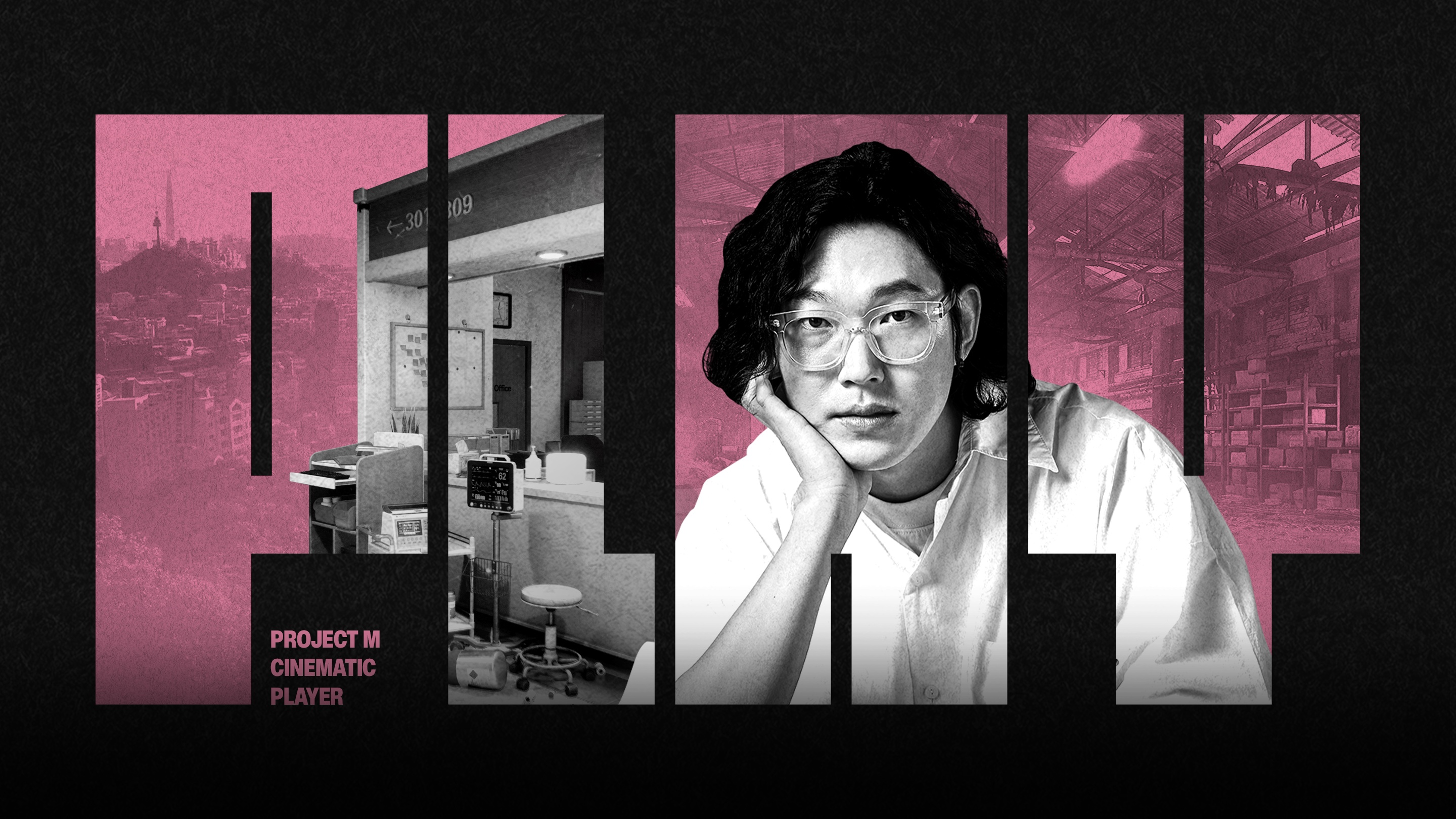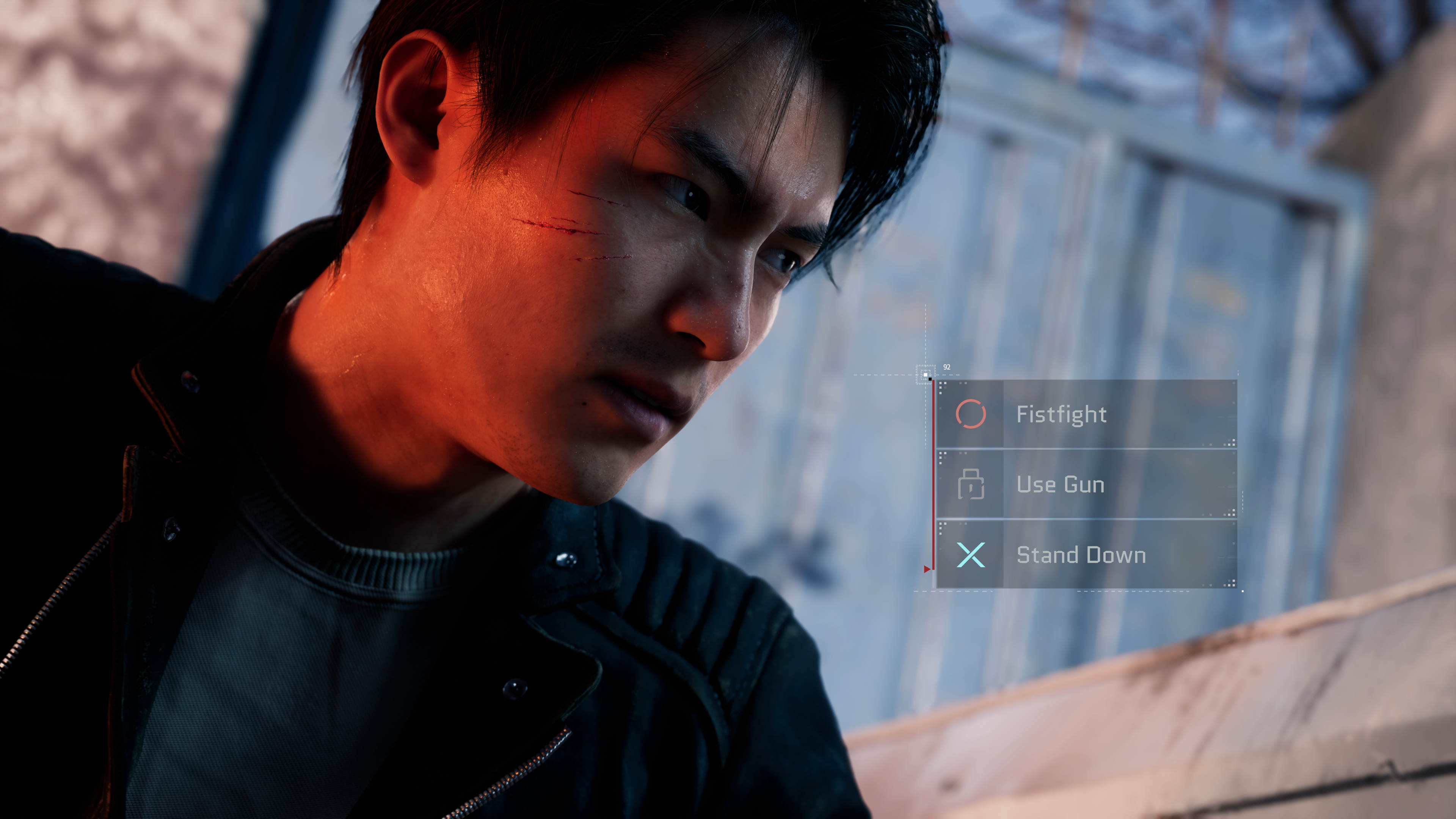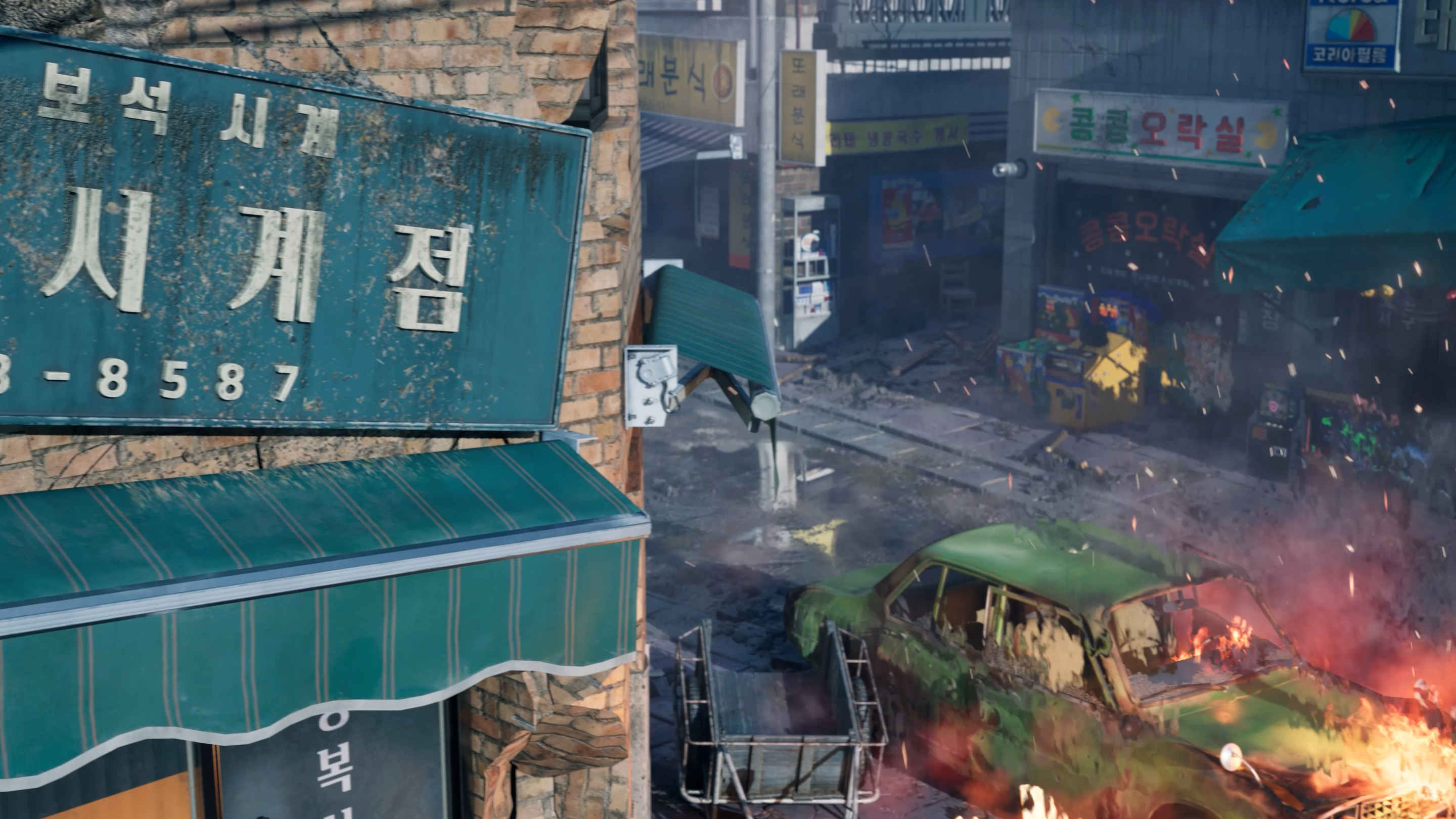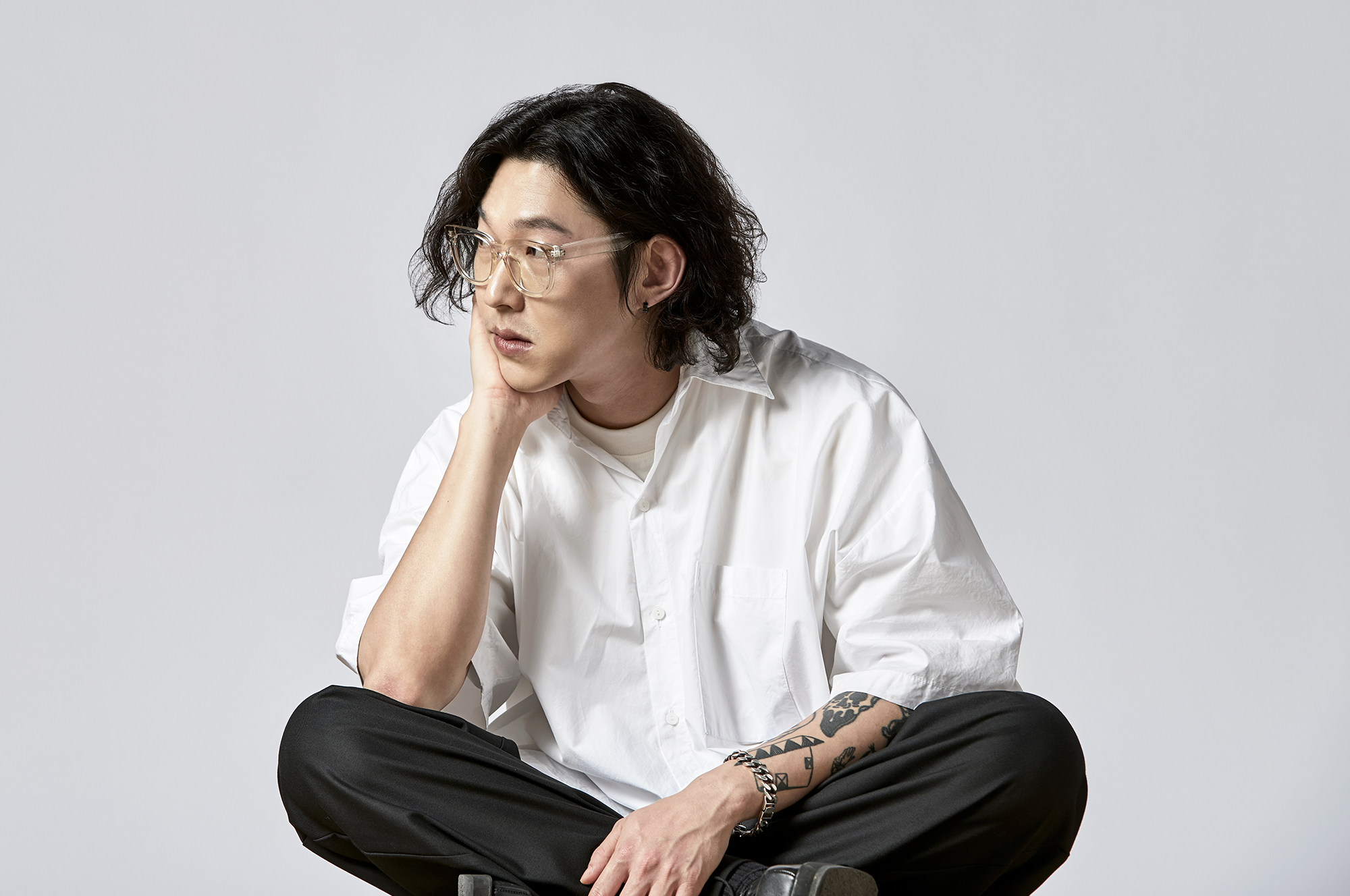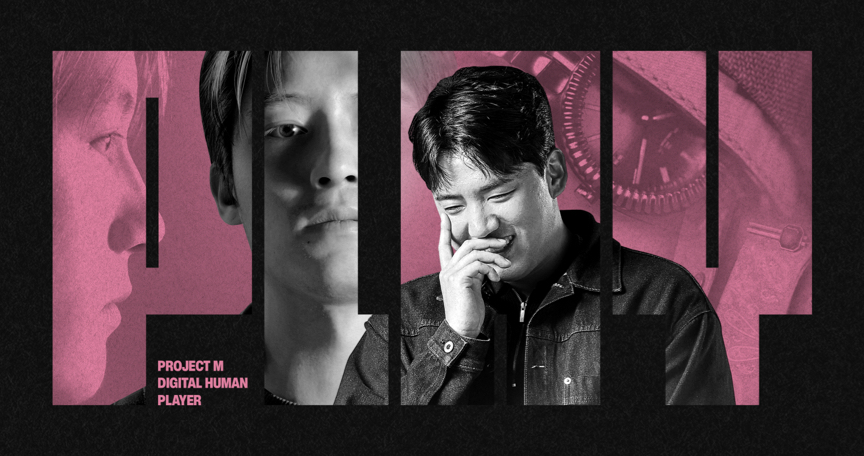The TECH TRACK series sheds light on the developers of projects currently under development by NC. In the TECH TRACK series, we will meet individuals in developer roles that effectively showcase the latest direction and characteristics of the game industry. We will listen to their roles and visions.
Second up is Soojeong Ock who is the cinematic artist of <Project M> Cinema Team.
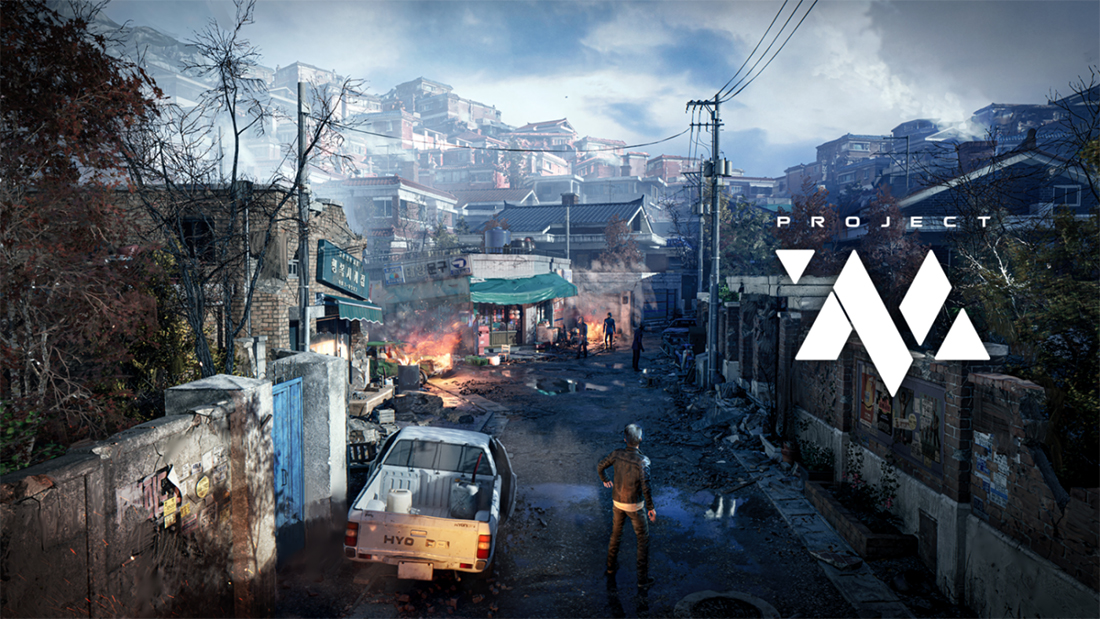

Project M | The next generation AAA console project that will present high immersion and tension using real-time digital humans. Project M is an adventure game with delicate cinematic presentation, interactive elements, and action elements.
TRACK 1 | my CAREER
The Creator of Visuals in Games
The Cinematic Artist Who Uses Cinematography Techniques to Direct Game Scenes
Recently, the quality of in-game cutscenes has vastly improved, with AAA games now offering what rivals film cinematography. Traditionally, there was no distinct position for framing or even directing game scenes. However, these responsibilities have since been divided, and cutscenes are now created from the viewpoint of film directors. In other words, the significance of game cinematic artists has grown.
Game cinematic artists are now responsible for developing storyboards, pre-visualizing1, and filming all in-game cutscenes. They produce high-quality videos by determining in advance the appropriate actions of the characters' movement, position, and sequence according to the storyboard, and then film using cinematography camera movements. The cinematic elements of the game make the game feel more lively and realistic, thereby making the story, the game's world, and the characters more interesting.
1Simulating Camera Direction on a Computer Prior to the Actual Production to Reduce Trial and Error
The Next Step of Immersion for Players
I worked as a cinematographer in the film industry for six years before joining NC's Cinema Team three years ago.I am currently in charge of 〈Project M's〉 overall cinematography, which includes gathering references, creating a storyboard, and pre-visualization to aid in the production of its playtest build.
All of the cutscenes in 〈Project M〉 were created using conventional cinematography techniques. Because this is an interactive adventure game with a variety of interactions, cinematography is extremely important. The team is constantly thinking about where the camera should be from the perspective of the player so that they can engage in combat. We also try to put emphasis on the natural progression of the player's gaze that allows them to follow the story. Nonetheless, the team and I are making progress by overcoming both large and minor obstacles.
Implementing Cinematography into Games


In-game camerawork is comprised of the following steps. First, the scenario is analyzed and then a storyboard that matches the sequence is produced based on the multiple references. During the storyboarding process, consideration is given to the character's movement, camera angle, and compatibility of sequences.
Once the storyboarding is complete, the pre-visualization process begins. Pre-visualization checks the composition of each scene, the camera angle, and character movement. The outcome of this process serves as the foundation for creating the actual footage. During this process, team members act as characters or use Unreal Engine 5 to create the pre-visualization.
After pre-visualization, plans for each part and the main production are made. We collaborate with the Animation Team to confirm the character's movement and placement in the background before proceeding to perform MOCAP. Shots are configured through Unreal Engine 5's Sequencer after the MOCAP data and background have been prepared. After determining the overall flow, movements and angles are refined for greater detail. The final Sequencer configuration is complete after we play the game to check if there are any issues, and work with each team to resolve them.
CAREER PATH | Until I became a "Game Cinematic Artist"
I started my career at a VFX studio as a pre-visualization artist. I worked there for 5 and a half years, and I created pre-visualizations for various films including 〈Along With the Gods〉, 〈Ashfall〉, 〈The Battle: Roar to Victory〉, 〈Escape from Mogadishu〉, 〈Alienoid〉, and more. It was while I was working on 〈Escape from Mogadishu〉, when I first tried the Unreal Engine tool.
Seeing my name in the ending credits for my pre-visualization work felt rewarding. However, it wasn't the greatest feeling in the world to find out that there were numerous alterations to the camera angles and shot compositions that I worked on for the actual film. Meanwhile, I discovered game cinematics and console gaming, and I was surprised that the quality of recent cinematics and in-game cutscenes were on par with that of movies and TV series dramas. It was especially appealing that the cinematographer was in charge of the in-game camerawork and saw it through to the end. This was also around the time I met the Cinema Team of 〈Project M〉 and started directing games that I had only enjoyed as a player.
Because 〈Project M〉 is an adventure game with heavy emphasis on the story, like movies, the skills and experience I have honed while working in the film industry are very helpful. Of course, the overall production process differs greatly, but it is not that different when just looking at camerawork. Although it is trivial, the cinematographer's intentions, which are detailed in the character's position or movement, determine the overall atmosphere of the game and the player's sense of immersion, just as they do in movies.
Designing Videos with an Understanding of Games
The most important trait to become a game cinematic artist is knowledge of cinematography. Simultaneously, one must have a solid understanding of game-related elements. They are both essential because high-quality cinematic footage needs to put game elements into consideration during sequencing. Although we leave camera movement to the player for the most part, there are some play elements we must consider, such as close-ups on key clues or specific areas, and QTEs (Quick Time Events).QTE is an event where players are given choices via buttons, and the outcome differs according to which button the player pressed.The process is created in collaboration with the System Planning or Programming Team. Therefore, knowledge of games in various fields such as gameplay, layout, lighting, sound, and editing is necessary.
“What It Takes to Create Art”
I believe the most important factor is essentially love for cinematography. In the process of creating a visual outcome, there are no correct answers. Therefore, trial and error are followed by various inputs, so you can see them from a fresh perspective. But when you love what you do, especially in cinematography, every second spent is a happy moment. When passion for work is the foundation, even if the process is painful, the end result will undoubtedly be better. And the end result is a driving force that makes me want to work again.
TRACK 2 | my PROJECT
Showing 〈Project M's〉 Unique Color Pallet
Raw and Vivid Expression of Korean Colors
Even when we take a look at just one scene, if it clearly captures the game's unique color and feel, we tend to remember that game for a long time. As video and storytelling are an important part of 〈Project M〉, we are currently focused on creating tags just for 〈Project M〉.
The first distinguishing feature is that it is set in Korea, which has not previously appeared in console games. Seoul's familiar alleys, shop signs, and props will allow Korean players to empathize more and give their play a sense of reality.
Furthermore, the video aims for a gritty sci-fi (rough, spirited, and bold) texture. The rough, bold atmosphere adds to the realism of the action elements and sci-fi stories with which players will interact. My role in this process as a cinematic artist is to produce immersive key elements so that the unique worldview and atmosphere of 〈Project M〉 can be fully revealed.
Announcing the Start of 〈Project M〉 with a Bang
In the recently revealed trailer for 〈Project M〉 where an assailant leaves a bomb in a cafe, I was in charge of producing the explosion. The idea came from the Concept and Art Teams. After learning how a bomb works and the visual direction they wanted, I started my research by looking for other references. While brainstorming this idea with my team, we designed a scene that took into account the game's background, explosion size, and visuals. Among them is a scene where the main character ends up tripping towards the camera due to the explosion, but it felt like something is missing. After careful thought and several attempts, I completed a more impactful shot by flying props in front of the camera, creating a blackout effect.
When the trailer was released, I was both excited and terrified of how the public would react. Fortunately, all of the positive responses made me extremely happy. Comments about how entertaining the footage was or how excited they are to see actual gameplay footage in the future all served to strengthen my determination to put in more effort until the game's official release.
TRACK 3 | my ENVIRONMENT
Take in as Much Environmental Input as Possible and Make It Your Own
Brilliant Colleagues Provide Nourishment for Growth
Most members of the cinema team, from the 3D cinematic artists to the storyboard artists, have a wide range of experience in multiple areas of video production, ranging from film VFX to drama and animation. The leader of the Cinema Team, in particular, has over 20 years of experience in film VFX and releasing games.
There are times when I'm at a loss because I cannot see what the end result will be. However, in situations like this, I was able to achieve a satisfactory result by consulting with my team members and determining the overall direction we should take together. Because we are all skilled and openly share and discuss our work, the time we spend doing so can only help us improve. As a result, seeing the quality of work improve with each passing year serves as motivation to do better.
Constantly Increase the Input to Escape from Routine
As you work, you will naturally use only the skills and tools with which you are familiar. It's difficult to invest time outside of work to learn something new when you're bogged down by routine. However, in an industry where trends change quickly, it is critical to keep up with and experiment with new information and technologies.
In that regard, I try to make the most of NC's resources. I can explore new technologies or knowledge that can be applied in practice through various technical special lectures or educational programs provided by NC, as well as request new equipment or tools in the process if deemed necessary.
For example, the Cinema Team is currently conducting R&D for a process known as modularization. When a character performs a specific action, it stores camera direction setting values that fit the movement and then automatically operates the camera based on the setting value when the character moves similarly. We are looking for as many relevant sources we can find since it's all new to us. NCU (NC University, an NC education system) provides related lectures where we could learn new skills and put them into practice.
We want to break out of our routine because we are creating a genre that NC has never attempted. Also, the team and I intend on increasing our input on the project. I have faith that our combined efforts will yield excellent results.
 Facebook
Facebook  Twitter
Twitter  Reddit
Reddit  LinkedIn
LinkedIn  Email
Email  Copy URL
Copy URL 